This isn’t just about invasive plants. It’s the plants that suddenly grow too tall, the plants that split like bloomin’ onions, big plants that are weak at the seams, as well as the plants that are bent on worldwide domination.
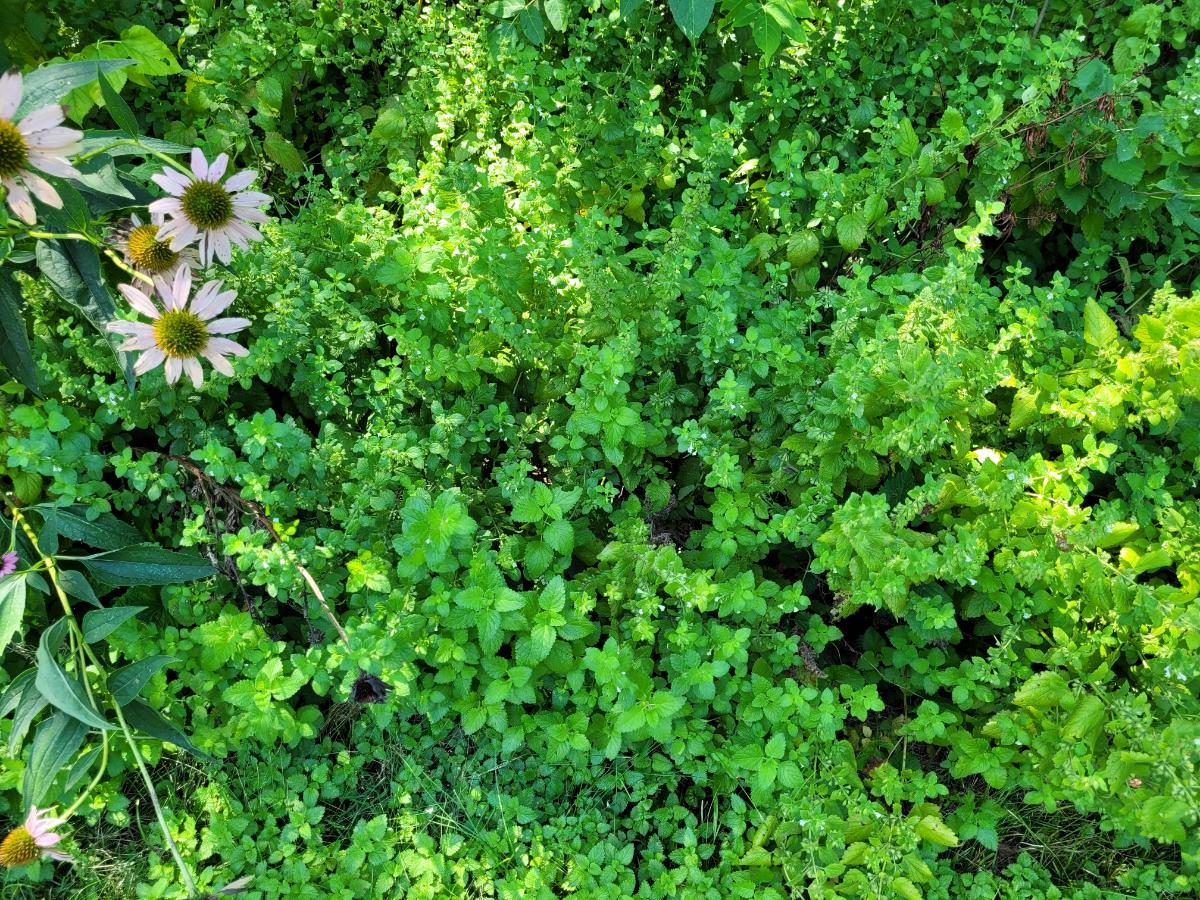
Different plants are invasive or problematic in different places and in different climates. One plant that is well-behaved in your backyard might act like a hellion a couple of states over, running wild all over yards and knocking down mailboxes and scaring the cat.
Climate also plays a part. A flower that overruns boggy areas and lake edges will stay within bounds if grown in a desert-adjacent area.
Here are 18 plants that don’t play nice – and how to make them behave.
Jump to:
1. Mint
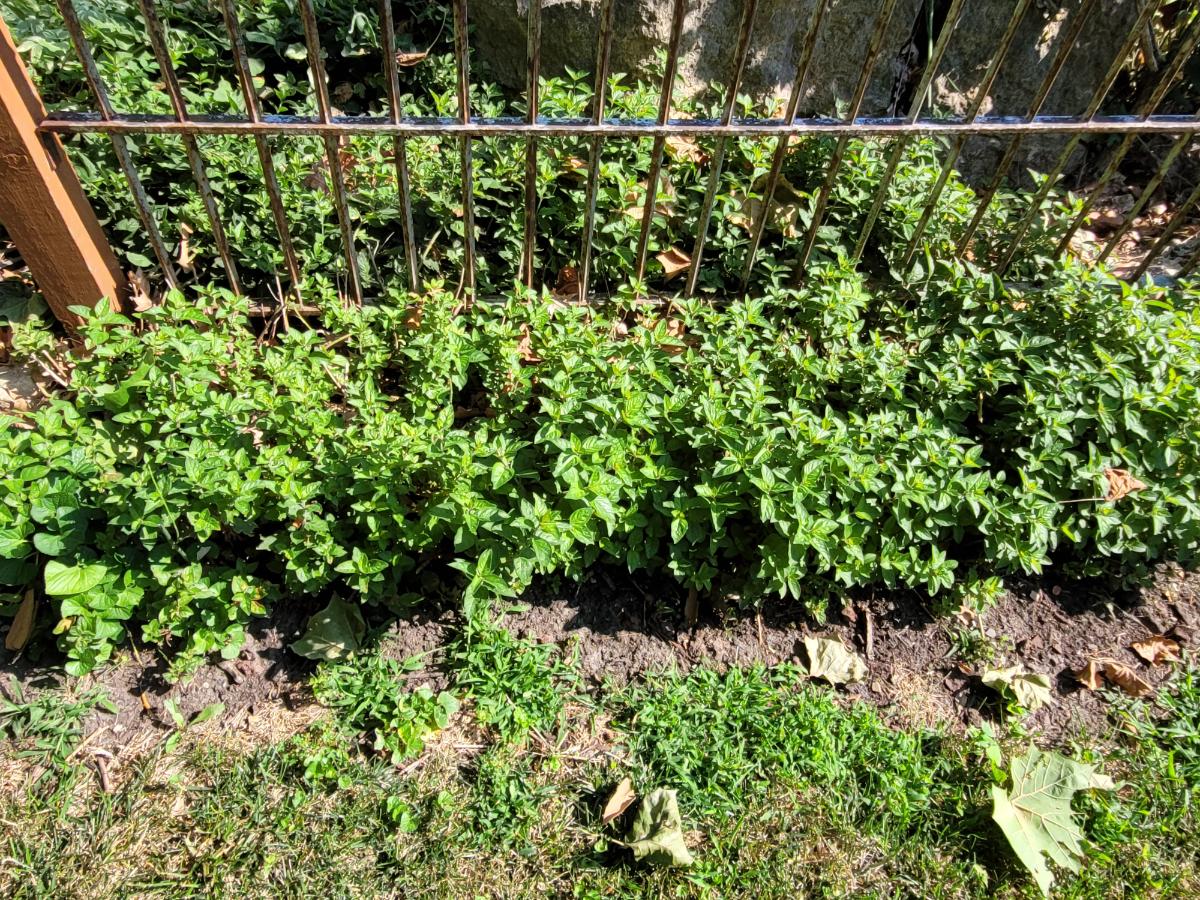
Mint is a rapidly spreading perennial that's great for tea and cooking because it smells so good. But whether you're growing spearmint, oregano, peppermint, lemon balm, or even Monarda, these plants will spread via underground rhizomes or seeds.
They all smell great but will invite themselves into the house and steal the remote. If you want a lawn that will never die, plant a little oregano plant nearby, and it will get to work on its plan for worldwide domination. It smells nice when you mow.
How to manage them: Mint should be planted in containers. Raise the pot off the ground with several bricks so rhizomes don't creep out and start new mint underneath.
2. Gooseneck Loosestrife
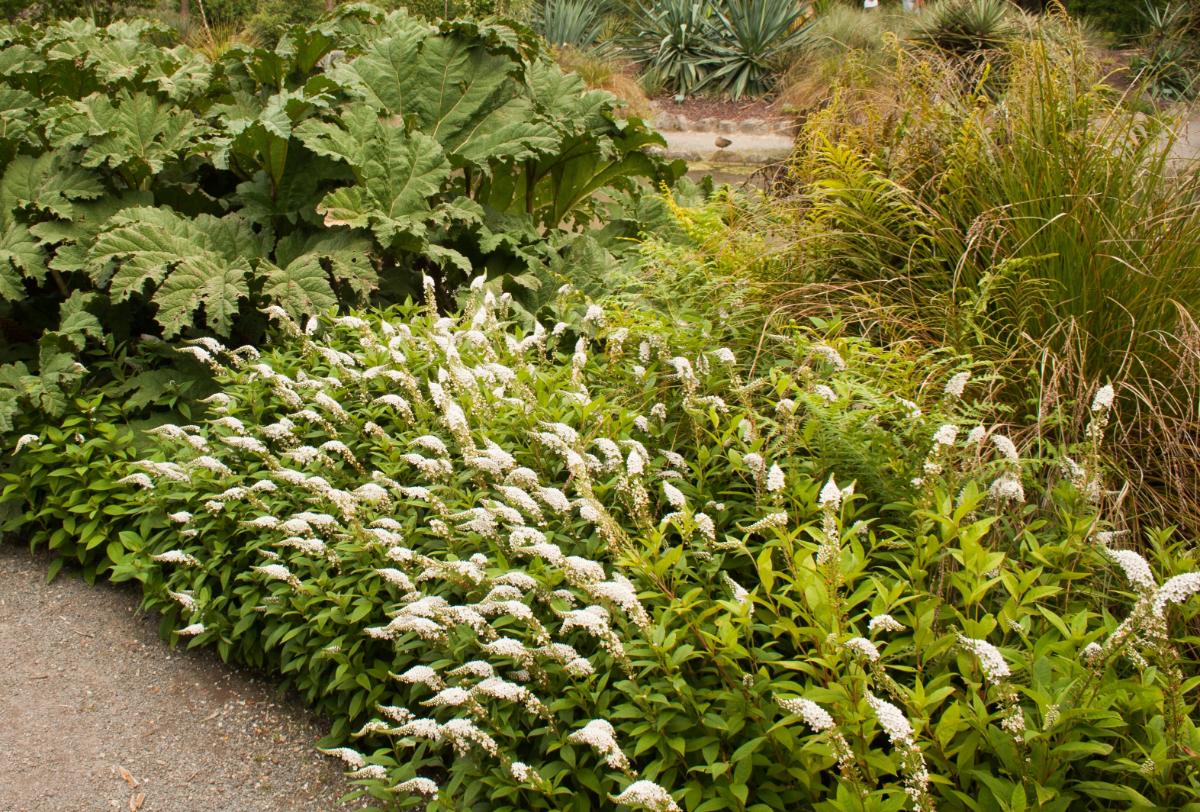
Lysimachia clethroides
Gooseneck loosestrife is like having a flock of white geese in your garden … and your yard … and driveway. This plant looks pretty for several months, but like geese, it makes a mess and gets into everything. Like geese, this plant also loves water, and is at its worst in wetlands, around lakes or ponds, and in boggy conditions.
Gooseneck loosestrife and other loosestrife are banned in several states for sheer invasiveness and choking waterways.
How to manage them: Pull up every sprout the instant you see it. Dig up new shoots. Some very bad cases may require regular spraying with glysophate. Plant it away from water to keep it from being a nuisance. Plant it within an area bounded on all sides by a hardscape to keep it in bounds.
Learn how to spray organic pesticides safely.
3. Harebells
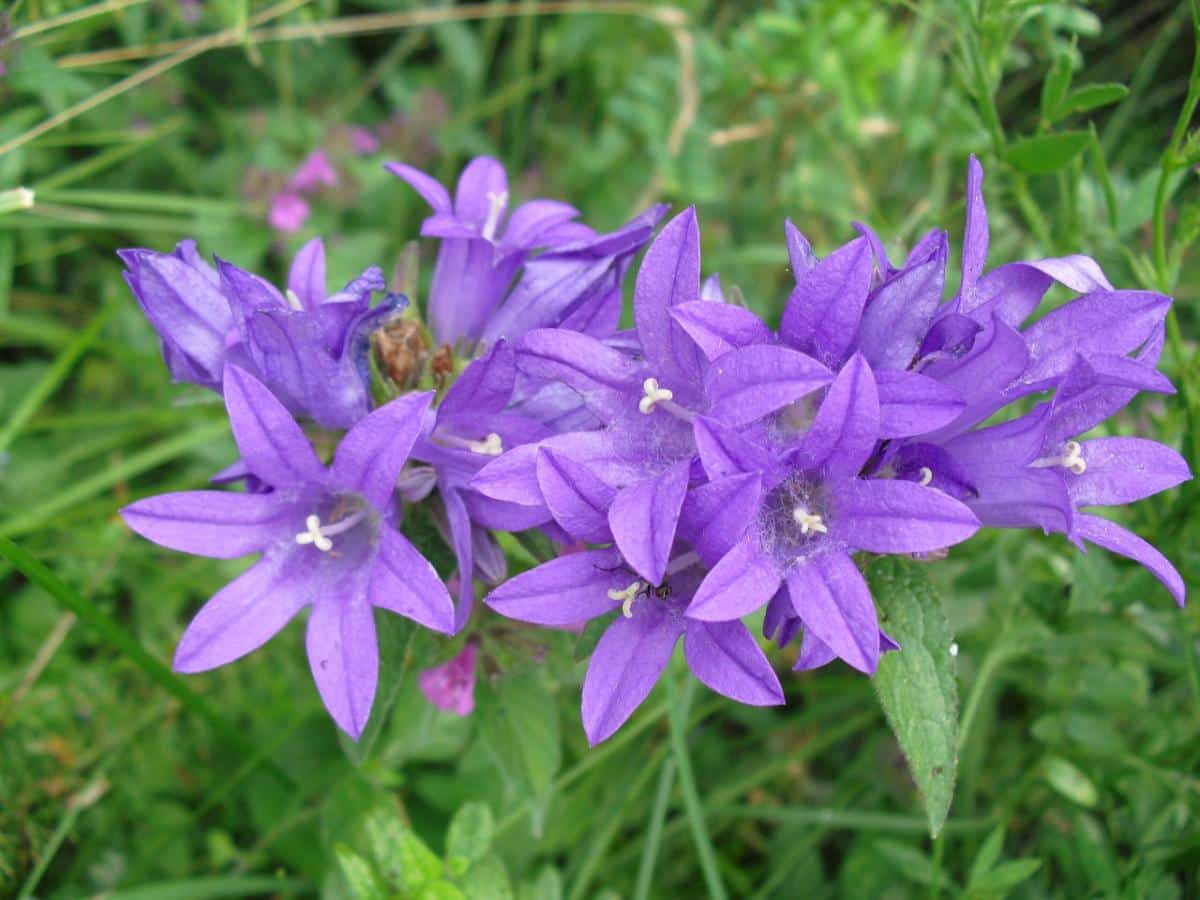
Campanula glomerata
Also known as bellflowers.
I fell in love with harebells, the tidy ‘Blue Clips’ and ‘White Clips’ because they look so adorable. But the rest of the harebell varieties are a handful. They’ll come up in the middle of another plant and go on a rampage across the yard. Harebells have beautiful flowers and they can make a strong display of color in the yard. But these plants are unstoppable. They seem to be impervious to even Roundup.
How to manage them: Dig the harebells up and be sure to get every bit of root out of the ground. Some cases may require digging and sifting soil to a depth of 12 inches to remove lateral roots and tap roots.
Or smother the harebells with old carpet laid over the area that they have taken over, as well as some of the area around it. Cover the carpet with an extra thick layer of mulch, just to be on the safe side, and let it sit for a year. If you peek underneath and see a couple shoots that refuse to give up the ghost, then cover up that whole thing again and let it sit for another year. Hopefully that does the trick.
4. Comfrey
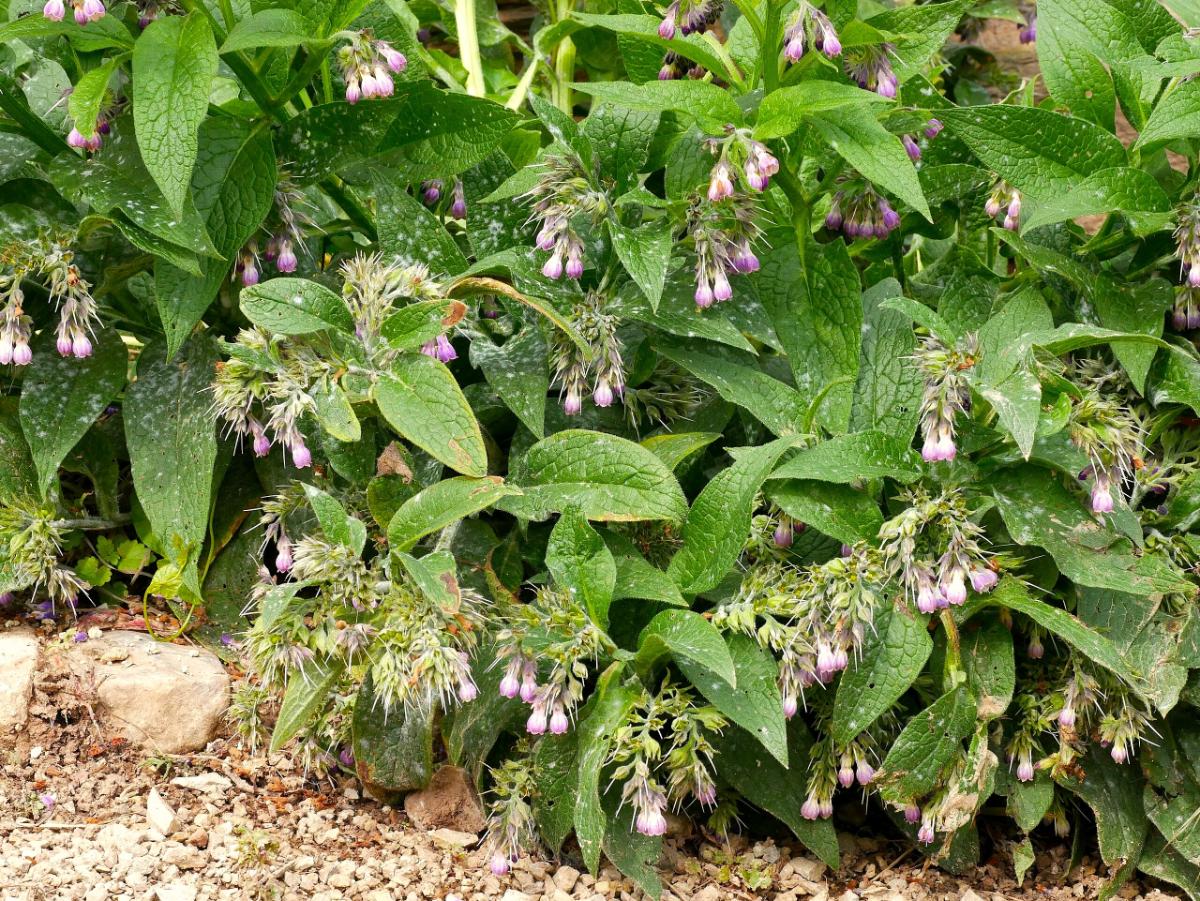
Symphytum officinale
Also known as knitbone, boneset.
Comfrey is valued by healers as a medicinal plant. It is also recommended by permaculturists because it’s a good understory plant. Their roots trap nutrients leaching through the soil, which can then be returned to the soil when the comfrey is made into compost. It also acts as a mulch-suppressing grass that will vigorously compete with your tree roots in your food forest.
However, regular comfrey will spread. If you plant it in your vegetable garden, you will never have a vegetable garden again.
Every spring, you’ll dig up roots and fill multiple trashcans with them. In summer, it devours your flowerbeds anyway.
How to manage them: If you’re going to plant comfrey, use the Bocking #4 or #14 variety, which is sterile and does not set seed. If you don't disturb the roots, they spread very slowly.
Learn about:
5. Trumpet Vine

Campsis radicans
Also known as trumpet creeper, cow-itch vine, or hummingbird vine.
In his Manual of Woody Landscape Plants, Michael Dirr says of trumpet creeper, “If you can not grow this, give up gardening. Grows in any soil and also prospers in sidewalk cracks.” It’s a fast grower, he adds, so “keep your legs moving when in the vicinity of this plant.”
This vine will scramble and climb over everything in its path. Seriously, this plant sends runners out 20 to 30 feet.
A pretty little vine that you planted to attract hummingbirds could potentially cover your house.
How to manage them: Good pruning is key to keeping trumpet creepers in bounds. Pull up or mow down seedlings.
6. Chives
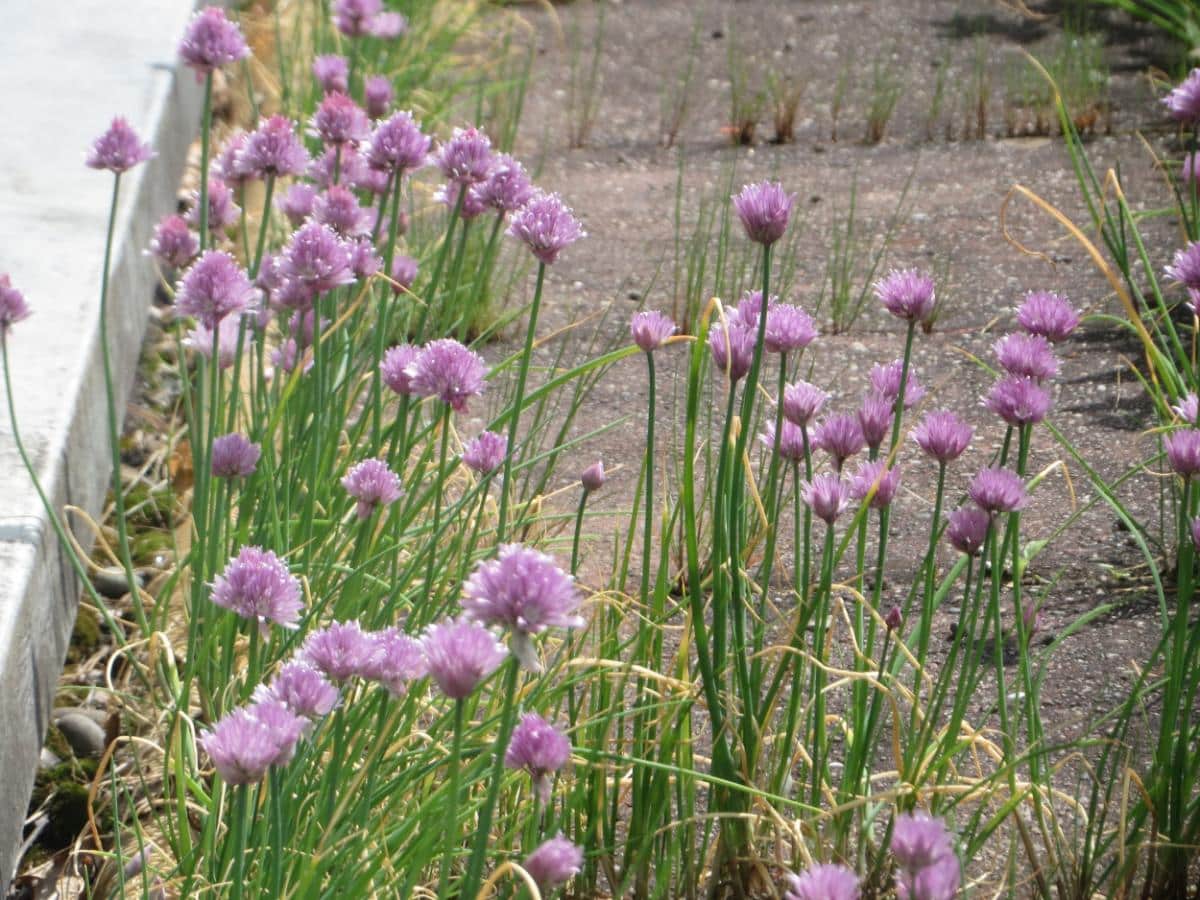
Allium schoenoprasum
There are not enough baked potatoes in the world to use up the chives that are garnishing your garden right now. This popular herb reseeds like mad and spreads anywhere where a seed can sprout.
How to manage them: Pop off the blossoms before they go to seed. Use them to make chive blossom butter. Pull up the other plants before they start seeding, too.
7. Wintercreeper
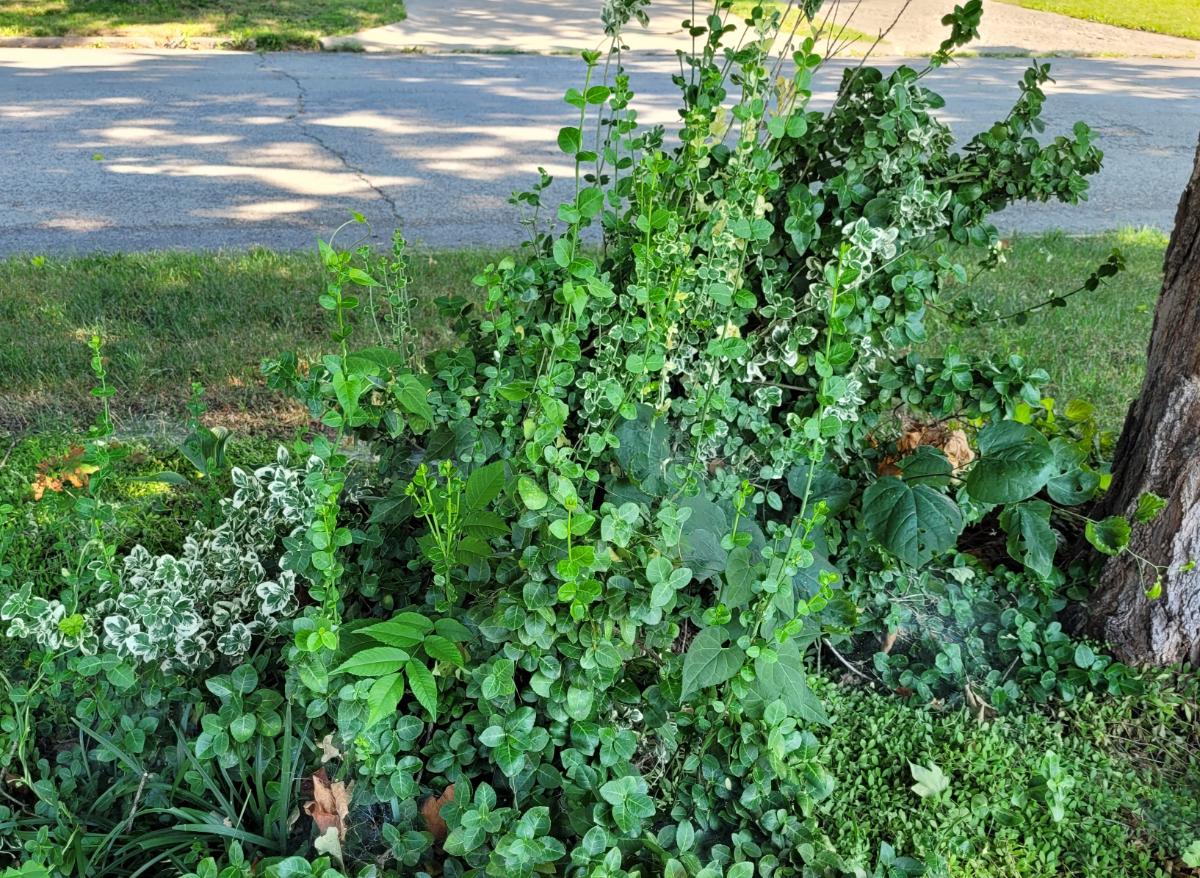
Euonymus fortunei
Also known as wintercreeper, climbing euonymus, spreading euonymus, or fortune’s spindle.
It’s not just one type of euonymus taking over the world. A number of its cousins can be invasive, including burning bush. However, wintercreeper can be a real bear.
This woody vine is used as a groundcover because it's vigorous and it gives good coverage to bare soil. However it can be too vigorous. It often escapes into local forests and covers the moist earth (its vines put out rootlets when it touches moist soil) and native plants are overwhelmed.
Not only does it take over the ground, but it also goes vertical.
Take a look at this picture. When I first saw this walnut tree, I wondered why its branches were so short.
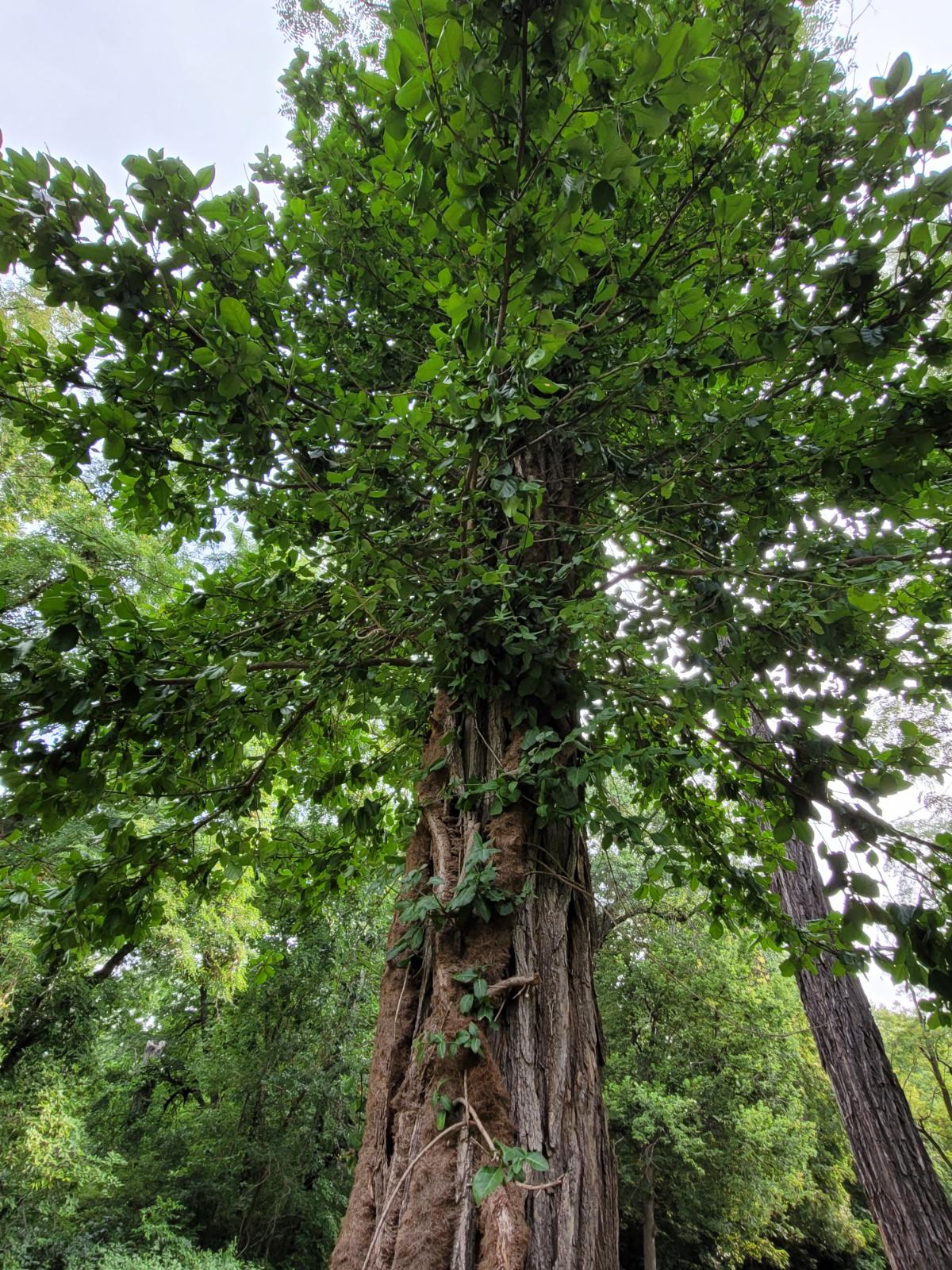
Note the hairy roots on the wintercreeper stems going up the trunk. This vine is a parasite on trees, aggressively covering the host tree’s trunk and branches with vines and long branches. Once it reaches the tree's top, the wintercreeper becomes a flowering and fruiting plant, dropping seeds everywhere. Then it's not just one tree that has wintercreeper growing on it, but many.
How to manage them: When the infestation is light, pulling up individual vines by the roots usually it does the trick. Heavy infestations will require cutting vines above the roots and spraying each cut stem with glyphosate right after the last killing frost, when most other plants are dormant. Take care not to splash any other plants with the herbicide.
8. Yellow Flag Iris
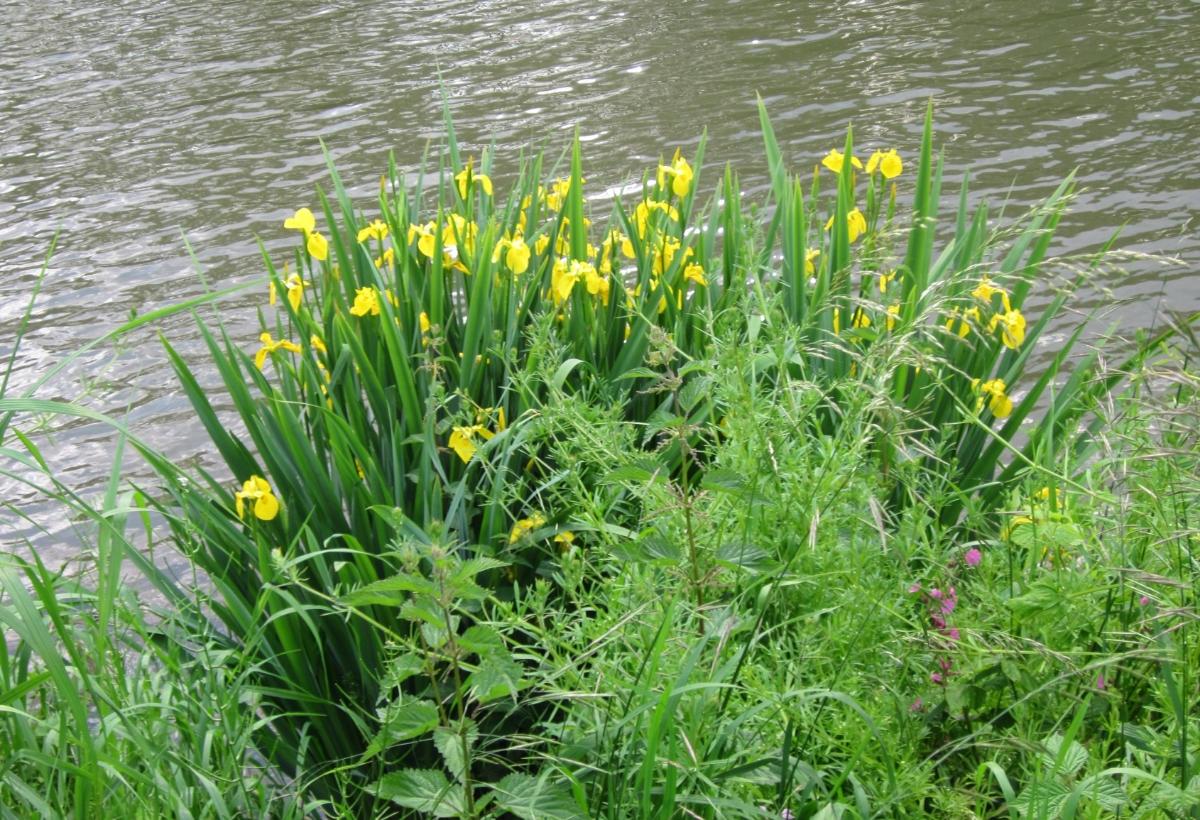
Iris pseudacorus
Yellow flag iris is a Class C noxious weed in Washington, and a real problem in other states. It will take over standing water such as ponds and bogs by multiplying rhizomes and self-seeding. In some places this iris can reduce stream width by up to 10 inches a year by trapping sediment around their roots.
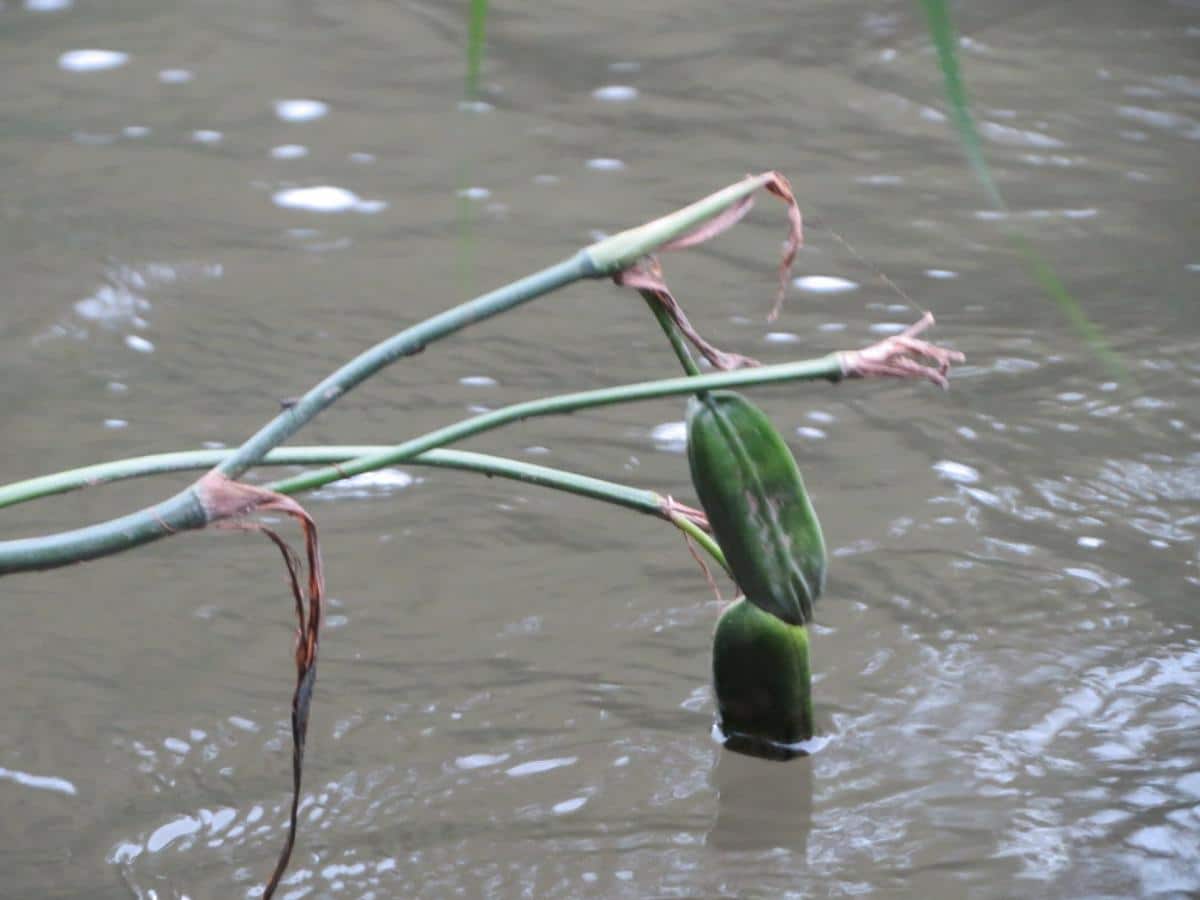
The seed pods open over the water, and the seeds drift downstream to populate another riverbank. This makes them hard to eradicate.
How to manage them: Herbicide can’t be sprayed around water, but swiping the leaves with a sponge or applicator laden with herbicide will work. Also, remove the seed pods to keep them from spreading. They can be removed by hand. Wear gloves because the sap can irritate the skin.
9. Barberry
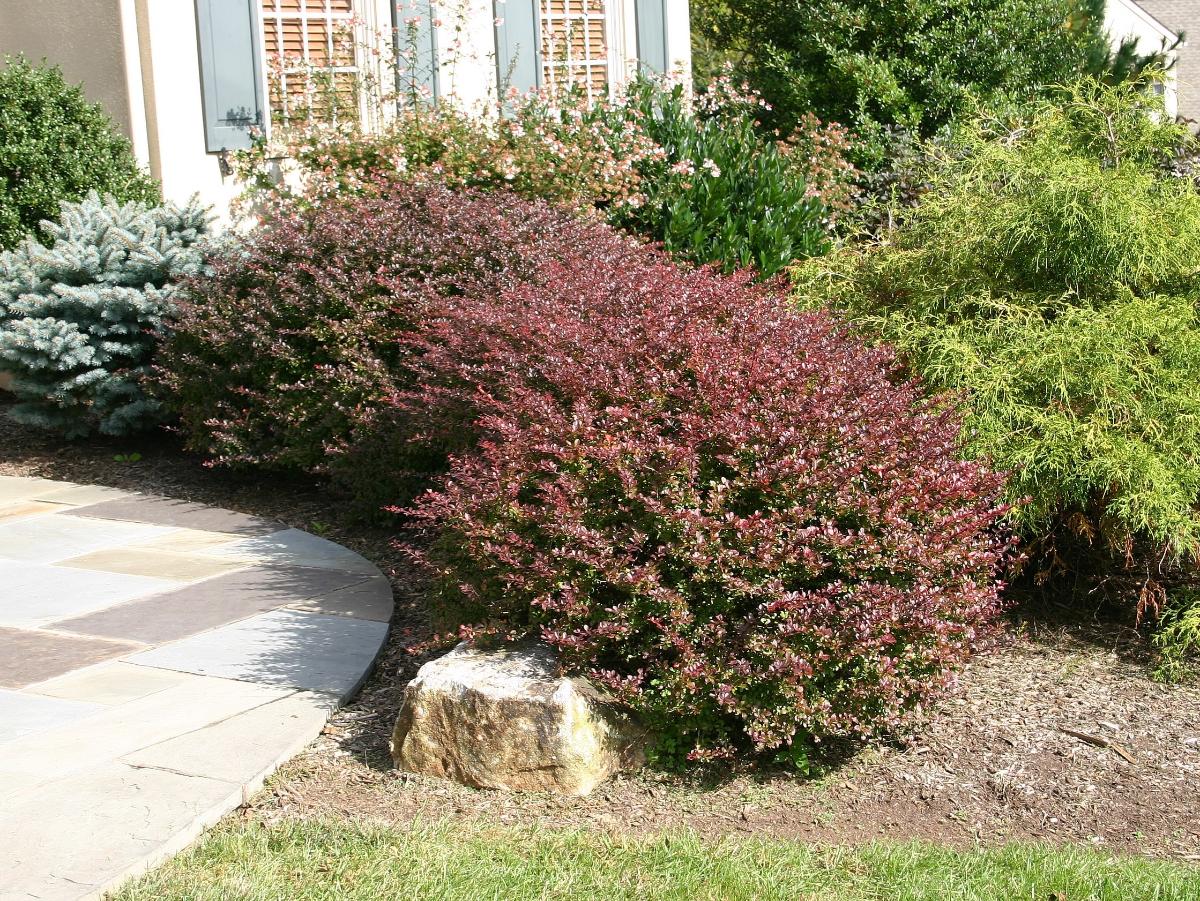
Berberis thunbergii
Barberries are attractive shrubs, widely used in landscaping. Some varieties are a deep bronze or burgundy, some are lime green.
But every inch of these shrubs is covered by needle-like thorns that pierce your gloves, even when you’re handling the plant like it’s a newborn baby.
Every day that I trimmed barberries meant I’d be picking thorns out of my fingers that night. These thorns don’t have a base you can grab to pull them out. Using tweezers made them bury themselves deeper, so I’d have to dig them out with a straight pin.
Barberries can also spread through reseeding. This means more thorns.
Just in case it's not clear to everybody, I despise barberries with the heat of 10,000 suns.
How to manage them: Don’t plant barberries. There are many other shrubs in the world that don’t stab you to death with tiny knives.
10. Bishop’s Weed
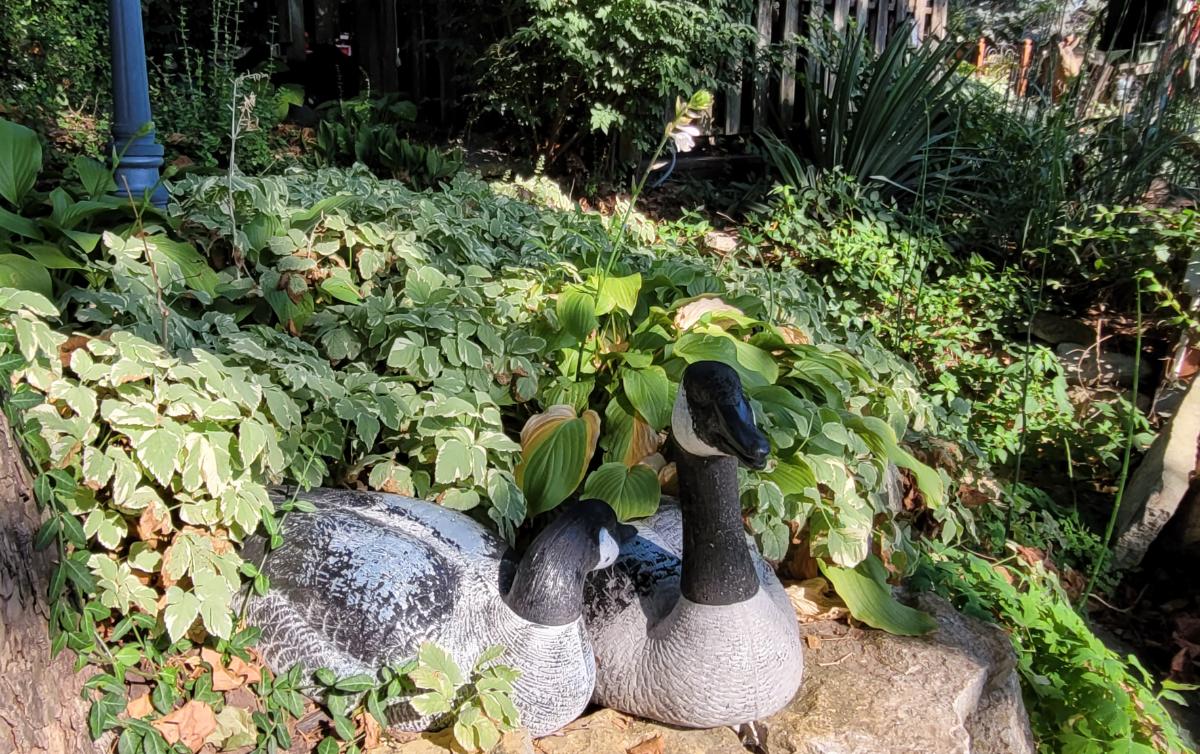
Aegopodium podagraria ‘Variegatum’
Also known as goutweed, ground elder, bishop’s goutweed
Looks nice until it takes over your front yard. Bishop’s weed spreads through rhizomes and can displace native species.
How to manage them: After it fully leafs out in spring, cut it to the ground. Cover the area with large pieces of cardboard, then throw 6 inches of wood chips over it. This will prevent photosynthesizing and force the bishop’s weed to deplete its energy reserves and eventually croak.
Read more gardening advice from Rosefiend Cordell.
11. Chinese Wisteria
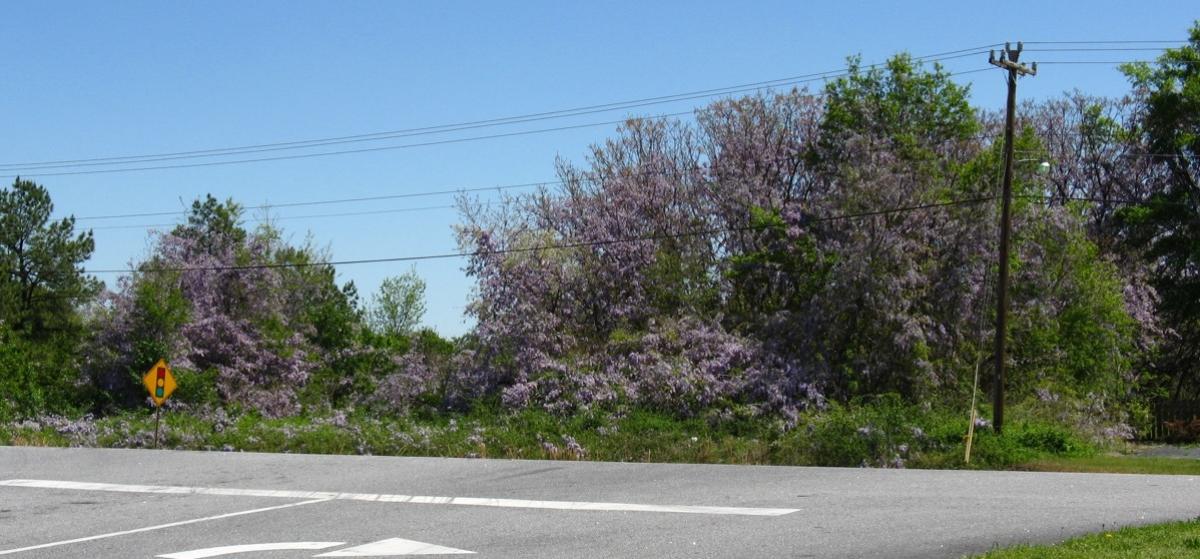
Wisteria sinensis
Wisteria loves hot and dry sandy soil, full sun, and shaded roots. When it’s happy, its runners will race to the nearest tall thing, loop its long arms around it, and pull it to the ground. It will overwhelm cottonwood trees, flag poles, and people who stand too close to it. Wisteria will grab your house and pull it to the ground like Samson in the temple. If there is an evil person in your life who you never want to see again, plant a wisteria in their yard and let it work.
How to manage them: Wisteria will keep sprouting every time it’s cut. Cut it back early in the spring and keep cutting it back every few weeks until fall. (Schedule it on your calendar so you don’t lose track.) This will force the plant to use up the energy stored in its roots and keep it from photosynthesizing enough energy to replace what’s lost. It also prevents seed production. Also, treat the stump with herbicide in spring or summer when there’s enough growth to pull the poison into the roots.
12. Obedient Plant
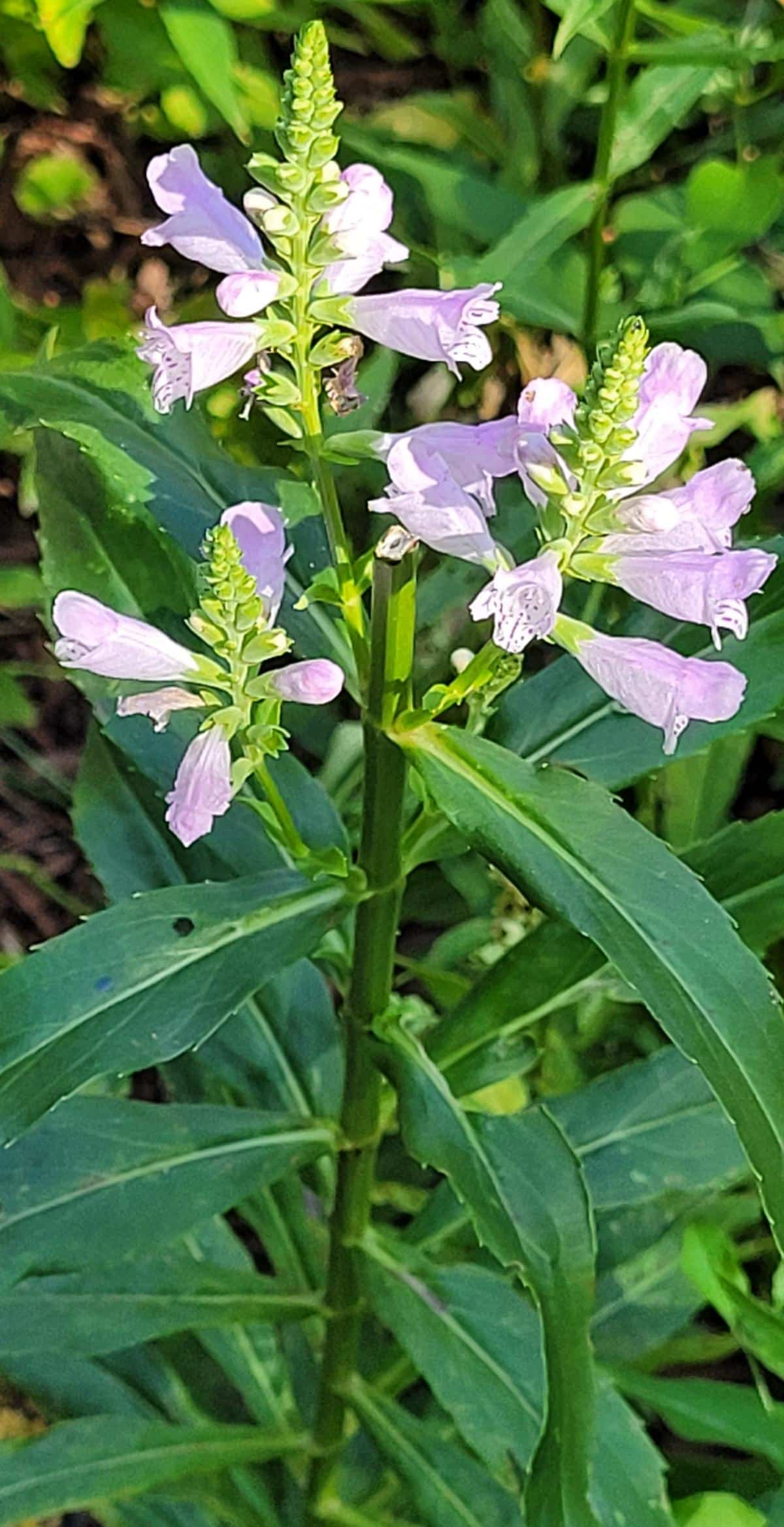
Physostegia virginiana
Also known as false dragonhead and Virginia lion-heart
More like a disobedient plant. It’s a good plant for attracting bees and butterflies. Its blooms are long-lasting through summer and fall. It sounds like the perfect plant … until you find yourself pulling obedient plant out of every part of your garden five years later. It is certainly prolific! Obedient plant spreads via seeds and runners.
How to manage them: Deadhead the plant before it can go to seed and pull up runners that attempt to creep out of the flower bed.
13. Passionfruit
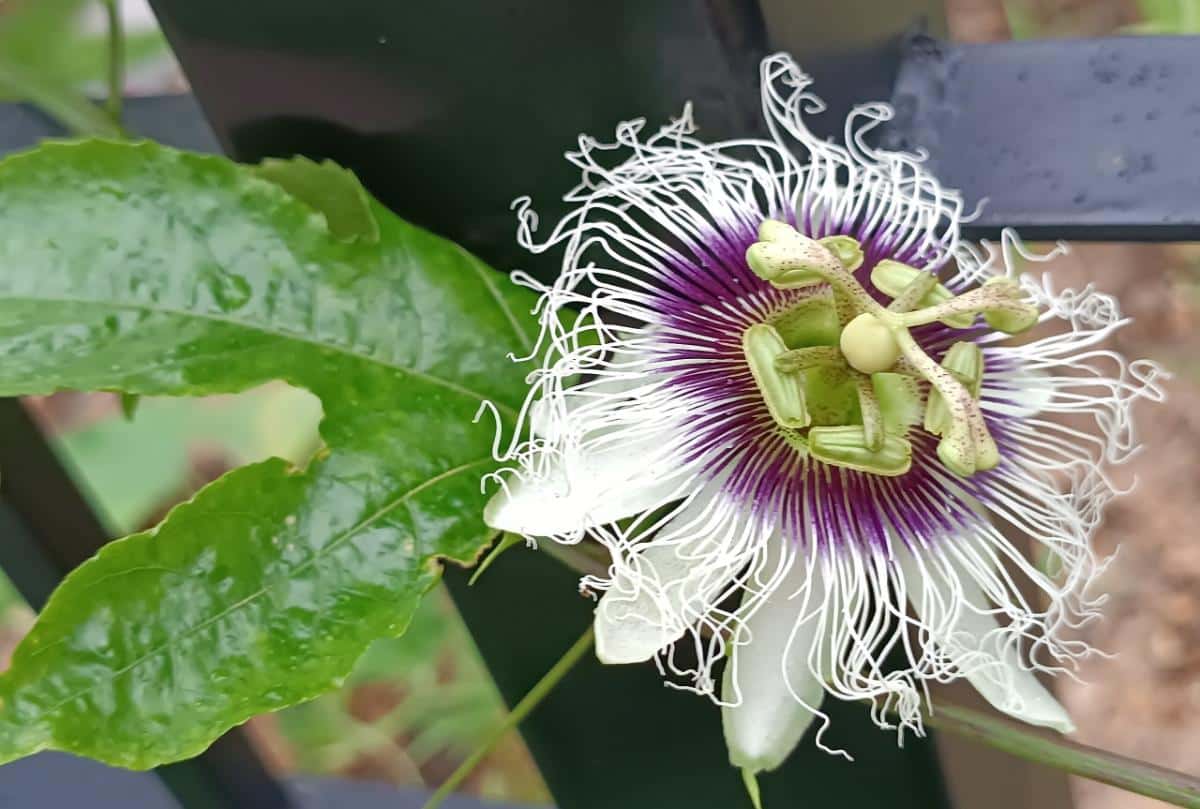
Passiflora edulis and P. flavicarpa
Also known as Maypop vine.
The flowers look like they’ve been made by aliens, and the little passionfruit that follows is tasty. Pollinators and passers-by both love it. But its vines spread aggressively and can grow over 20 feet in one year!
Like a drama queen, passion fruit needs to be reminded of its boundaries.
How to manage them: Keep them trained to their trellis, which should be big enough to handle a large vine.
14. Jerusalem Artichokes
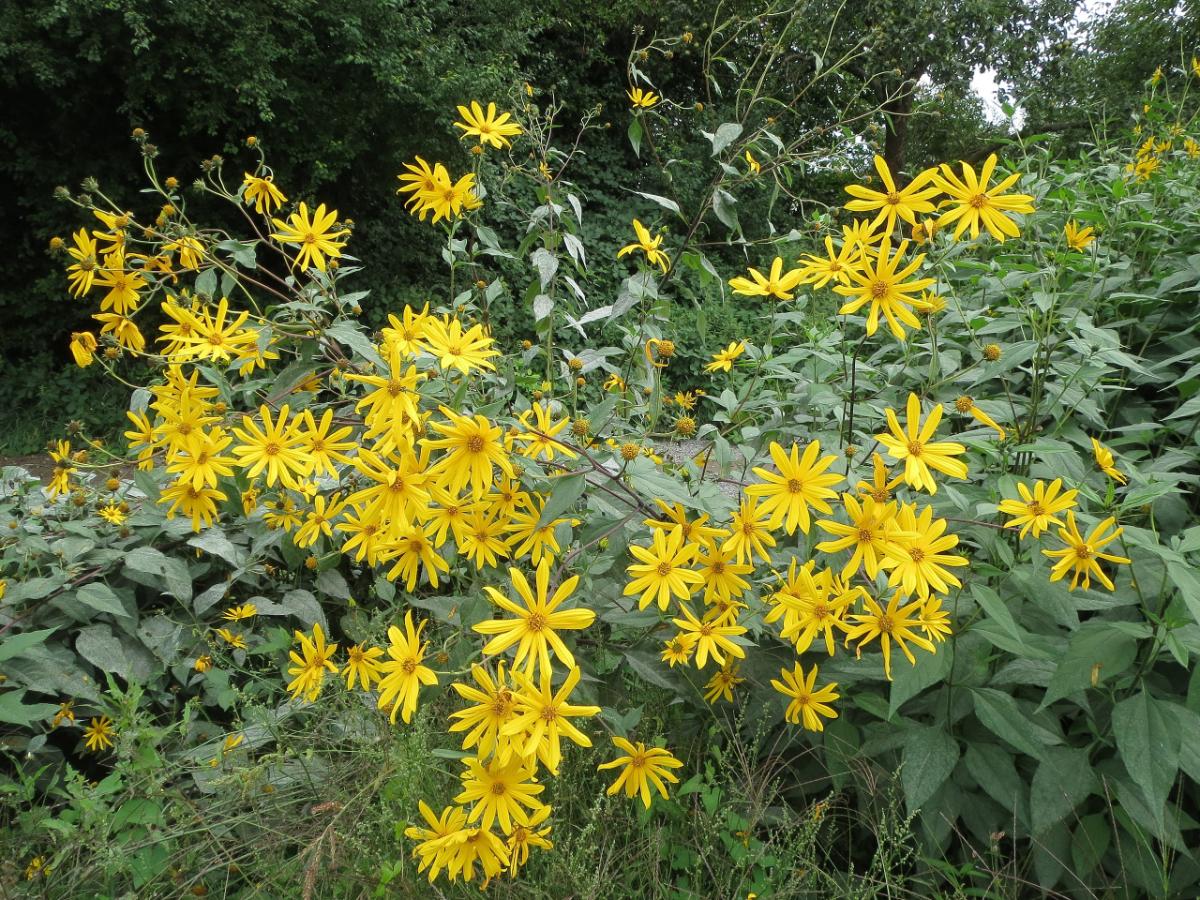
Helianthus tuberosus
Also known as sunchokes.
They’re cool, tall plants with leaves as rough as a cat’s tongue, and it bears lots of yellow flowers with brown centers like small sunflowers. The rhizomes? Tubers? Are edible and taste like artichokes or sunflower seeds.
You have to prepare them in certain ways, or they’ll make you extraordinarily gassy. Or, to quote John Goodyer, an English botanist from the early 1600s, “which way soever they be dressed and eaten, they stir and cause a filthy loathsome stinking wind within the body, thereby causing the belly to be pained and tormented.” Nailed it!
On the other hand, sunchokes contain fructose instead of sugars, so they’re really good for diabetic people.
Sunchokes will spread, but what really makes them a pain is if you try to move them. Even if you think you have all the sunchoke roots out of the soil, you don’t. Run a tiller over them, and they’ll show you how far and fast they can spread from a few broken-up roots!
Trying to dig these up will just encourage them. “Oh, are you trying to KILL me?” it cries and instantly starts multiplying.
How to manage them: The key to stopping their spread is to let them grow into a gigantic mass until they choke themselves into oblivion. However, when the sunchoke plants are in the middle of your garden, this plan isn’t going to work so well. It’s a matter of digging them up repeatedly until there’s nothing left to sprout. All the same, even once the sunchokes are gone, it might be a good idea to go no-till in that particular area for a few years.
15. Silver Maples

Acer saccharinum
Also known as creek maple, soft maple, white maple, or silverleaf maple.
We all like fast-growing trees until they start throwing limbs at your roof during a thunderstorm.
The problem with fast-growing trees is that they’re put together poorly. A slow-growing tree, like an oak, builds itself like a craftsman, or a craftstree, slowly and carefully, and grows to be a work of art. A silver maple, on the other hand, is held together with glue and string.
Silver maples grow at 50 miles an hour, and after a few weeks, you turn around, and suddenly, there’s a 75-foot tree growing straight up through the power lines and over your house. Then, it develops a little rotten spot in its trunk that turns into a big rotten spot. Then, on a night of 80-mile-per-hour winds, it comes down. Ask me how I know! (Incredibly, even though multiple trunks sent the tree in all directions, its limbs missed my shed, the neighbor’s shed, and the chicken house. The only damage was where it took out the neighborhood power lines and sheared half the branches off my blackgum tree – both are doing fine now.)
How to manage them: Pull up seedlings as soon as they appear. Don’t let your loved ones buy silver maple trees! (Sugar maple and red maples are fine.)
16. Tree of Heaven
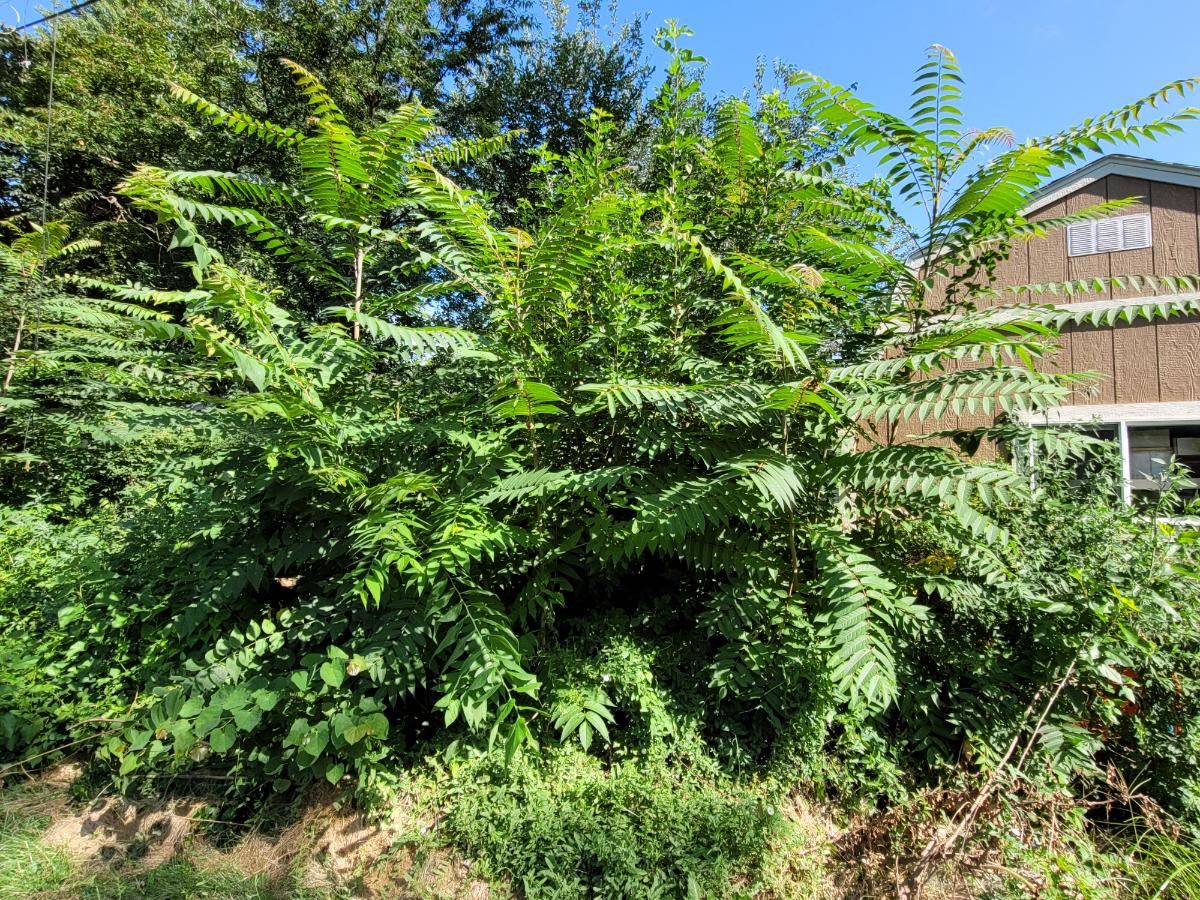
Ailanthus altissima
Also known as stinking sumac, varnish tree, stink tree
Scripture says the devil may appear in the guise of an angel. That applies perfectly to the Tree of Heaven. Some conman named this tree. It flings tens of thousands of seeds far and wide, and they will grow anywhere. They grow in the raspberry patch and pop up in a crack in the sidewalk. This noxious weed will grow inside your house if you give it a crack in the foundation to squeeze through. Betty Smith’s book A Tree Grows in Brooklyn could be renamed A Tree Grows Through It.
This so-called tree of heaven also secretes a chemical from its roots that’s toxic to other plants keeps other trees and plants from growing nearby.
How to manage them: Cutting them down is viewed as an attack, so they come back even more aggressively. Instead, cut a downward-sloping incision into the lower trunk and spray it with herbicides, leaving the tree standing.
Pull up seedlings as soon as you spot them, or paint them with herbicide while they’re still small.
17. Rose of Sharon
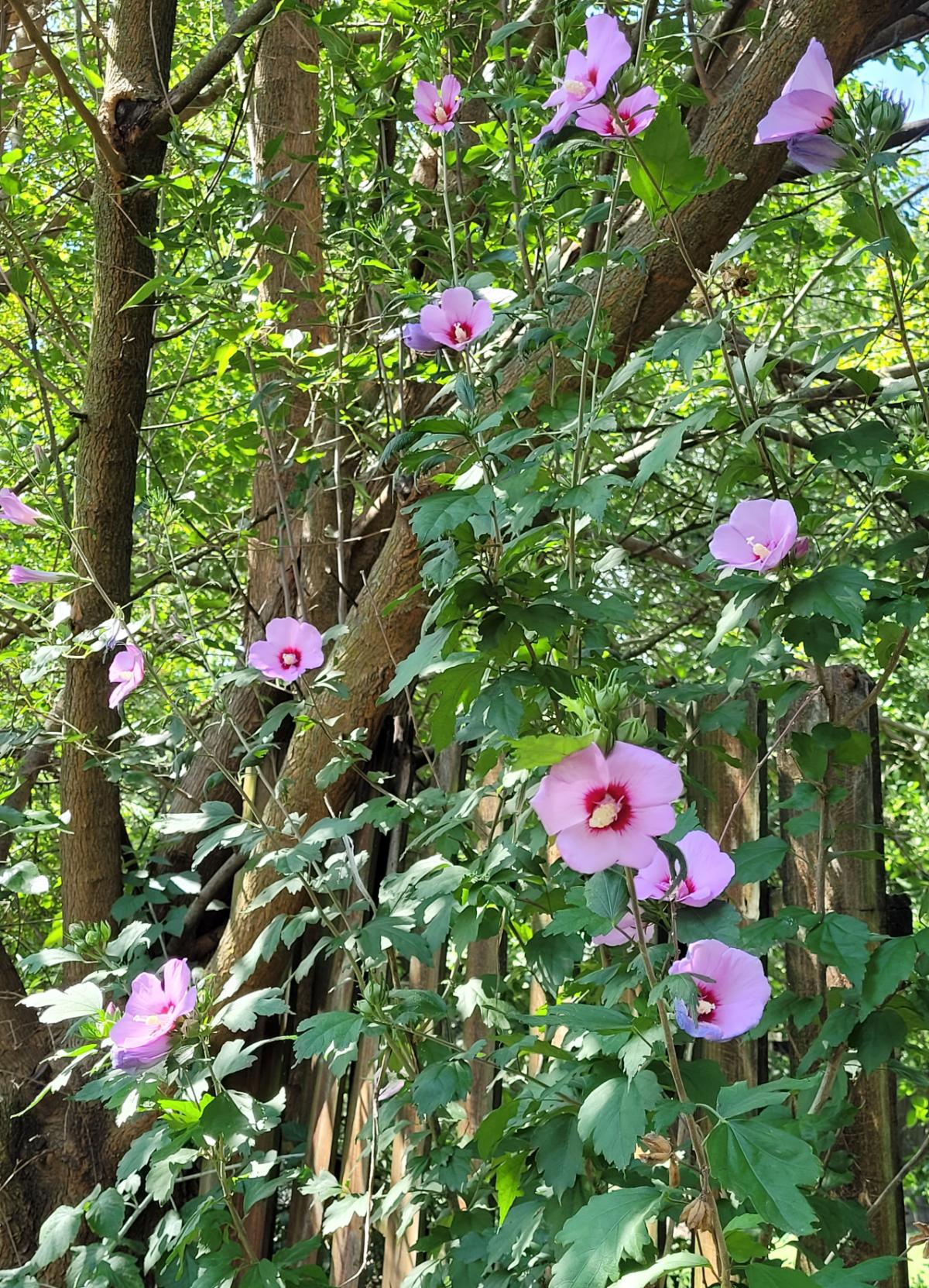
Hibiscus syriacus
Also known as common hibiscus, rose mallow, and althea.
To quote the Song of Solomon, “I am the rose of Sharon, and the lily of the valleys.” This national flower of South Korea is related to ornamental hibiscus, but in some areas can be invasive. Rose will send her children all over your yard, and they immediately send down roots 500 feet down and crowd out your other plants.
How to beat: Prune Rose of Sharon in early fall before the seed cases open, or deadhead it often.
18. Bradford Pears
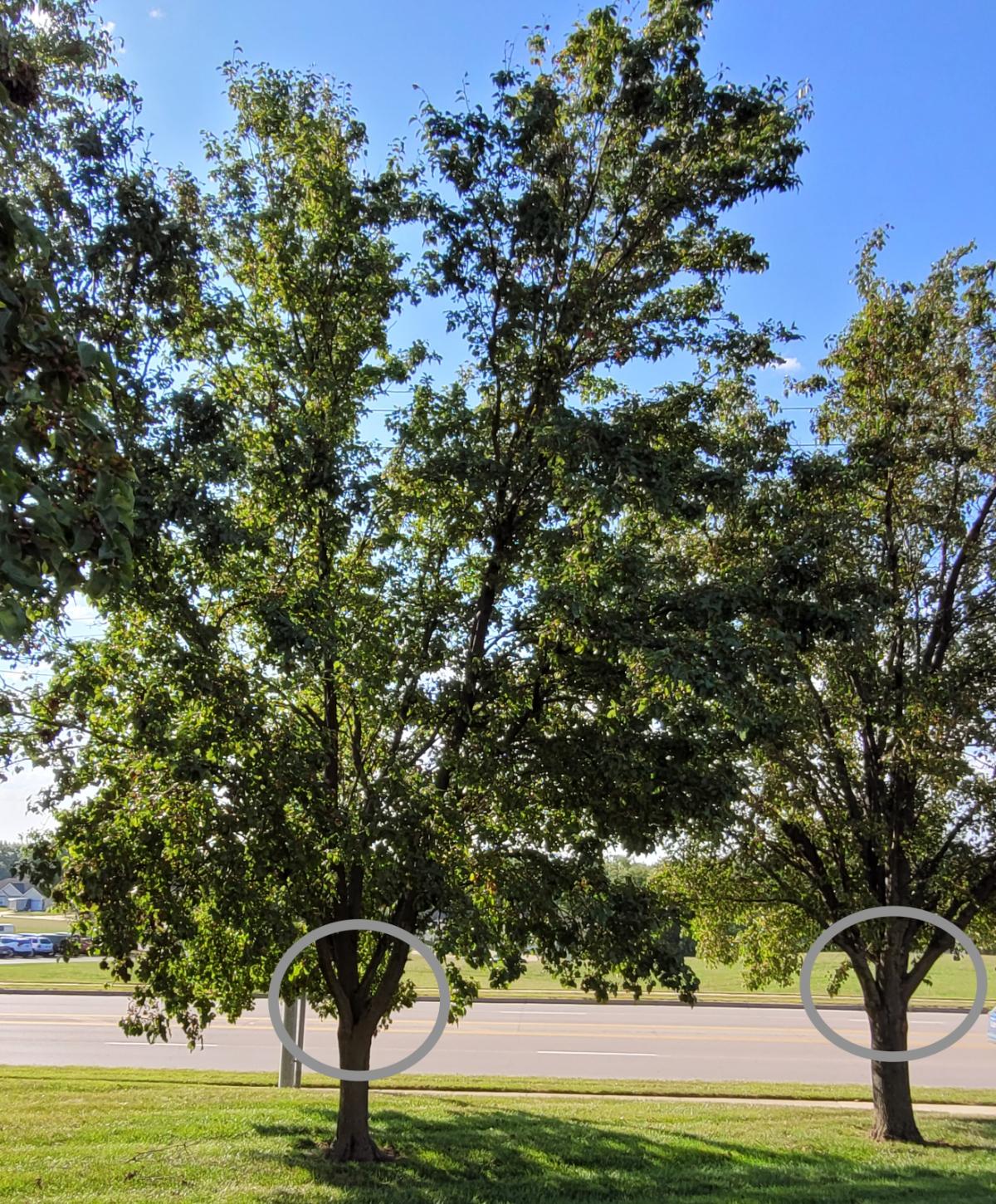
Pyrus calleryana
Also known as callery pear.
Bradford pears were widely planted from the 1960s into the 1990s because of their spring display of white blossoms, their disease resistance, and their ability to thrive. The fact that the blossoms smelled like fish was mostly overlooked.
But look at the photo above: The tree has a short trunk that branches out into long limbs that grow straight up into the air. The weak crotch angles – and having all the branches come out of one spot – often prove to be the tree’s undoing. Too much snow or ice on the branches, and the trunk splits in half, and there goes the tree.
Bradford pear, thought to be sterile, also proved to be invasive, leading to all kinds of callery pears popping up in random places and casting their springtime fish odor far and wide.
How to beat them: Our state conservation department and other state agencies had a buyback program for Bradford pears this year. Show a picture of your downed Bradford pear, and they’ll give you a choice of free, non-invasive trees to plant in their place. Other states need to get on this!
Read more gardening advice fromRosefiend Cordell.









Leave a Reply